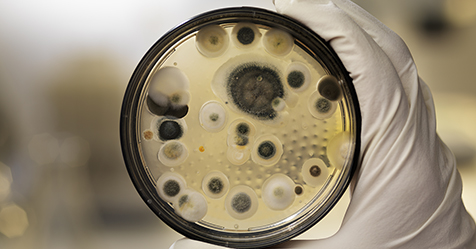Washing Antibiotic-Resistant Bacteria Down the Drain Failed to Stop Spread in Hospitals
New study finds transmission risk of multidrug-resistant bacteria appeared highest in hospital sinks.
A new study published in the American Journal of Infection Control spotlighted the particular vulnerability for contamination through sinks and other water sources in a hospital setting. The study followed the infection prevention steps taken to control a months-long multispecies outbreak of carbapenemase-producing (CPE) Enterobacterales that occurred in a pediatric ward at the Toho University Omori Medical Center in Tokyo in 2017. CPE bacteria are a major public health threat because of their resistance to antibiotics.
This new report details the detection of CPE in a single patient in June 2016, which appears to have triggered an outbreak to 19 pediatric patients starting in March 2017 and ending in October 2017 in an academic medical center in Tokyo.
The infection prevention team sampled microbes from patients and the environment of the pediatric ward to better understand the outbreak. This sampling identified nine sinks contaminated with CPE, including six in hospital rooms and three more in a nurse center, a waste room, and an ice machine. The CPE-positive sinks were all found in rooms where CPE-positive patients had been treated. In rooms with CPE-negative patients, no sink contamination was detected.
To help rein in the outbreak, all sinks in the pediatric ward were replaced with new ones in June 2017, and the new sinks were thoroughly disinfected with hydrogen peroxide. However, CPE contamination continued even after that step. The discovery of the same bacterial species in sinks in adjoining rooms indicated to researchers that pathogen transmission may be possible from one sink to another via the drains and connected plumbing.
Other measures implemented by the infection prevention team—composed of doctors, nurses, pharmacists, and microbiologists—included recommending hand disinfection after using sinks, introducing disposable tools for cleaning sinks, prohibiting mouth-washing with sink water, and enacting disinfection and drying procedures for any items exposed to sink water. Finally, after October 2017, no further CPE contamination was identified in patient samples or environmental surveillance.
“The tremendous effort that went into controlling this outbreak is representative of the comprehensive and holistic approach to infection prevention that is required in these situations,” said Tania Bubb, Association for Professionals in Infection Control and Epidemiology (APIC) president. “Even a measure as definitive as replacing contaminated sinks may not be enough to stop the spread. This outbreak ended because the infection prevention team implemented a bundle of core processes related to hand hygiene, and the use and disinfection of hospital sinks.”
For more information about APIC, visit apic.org.


